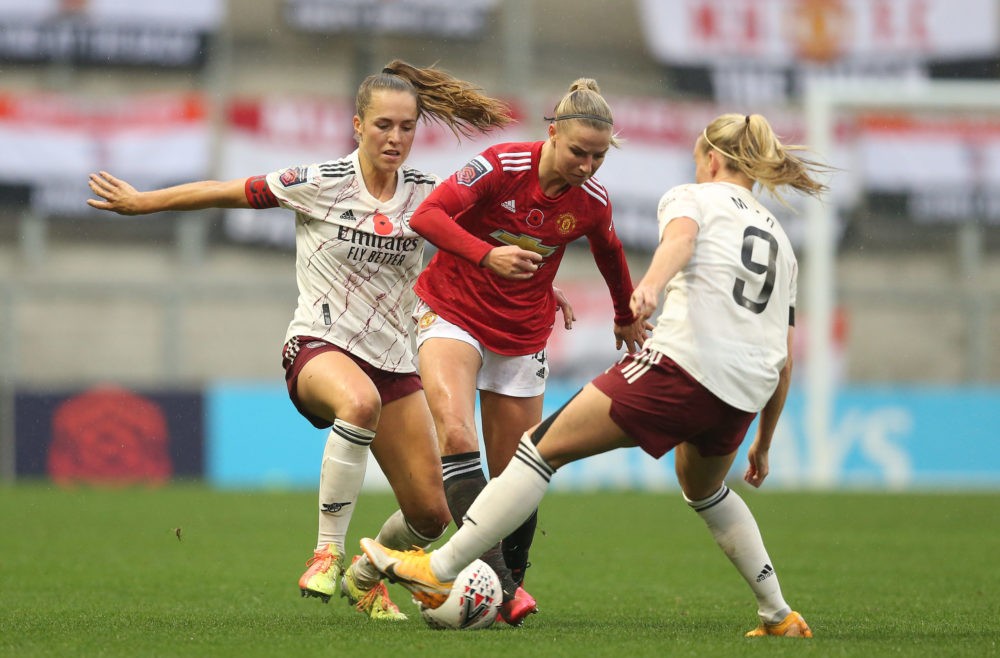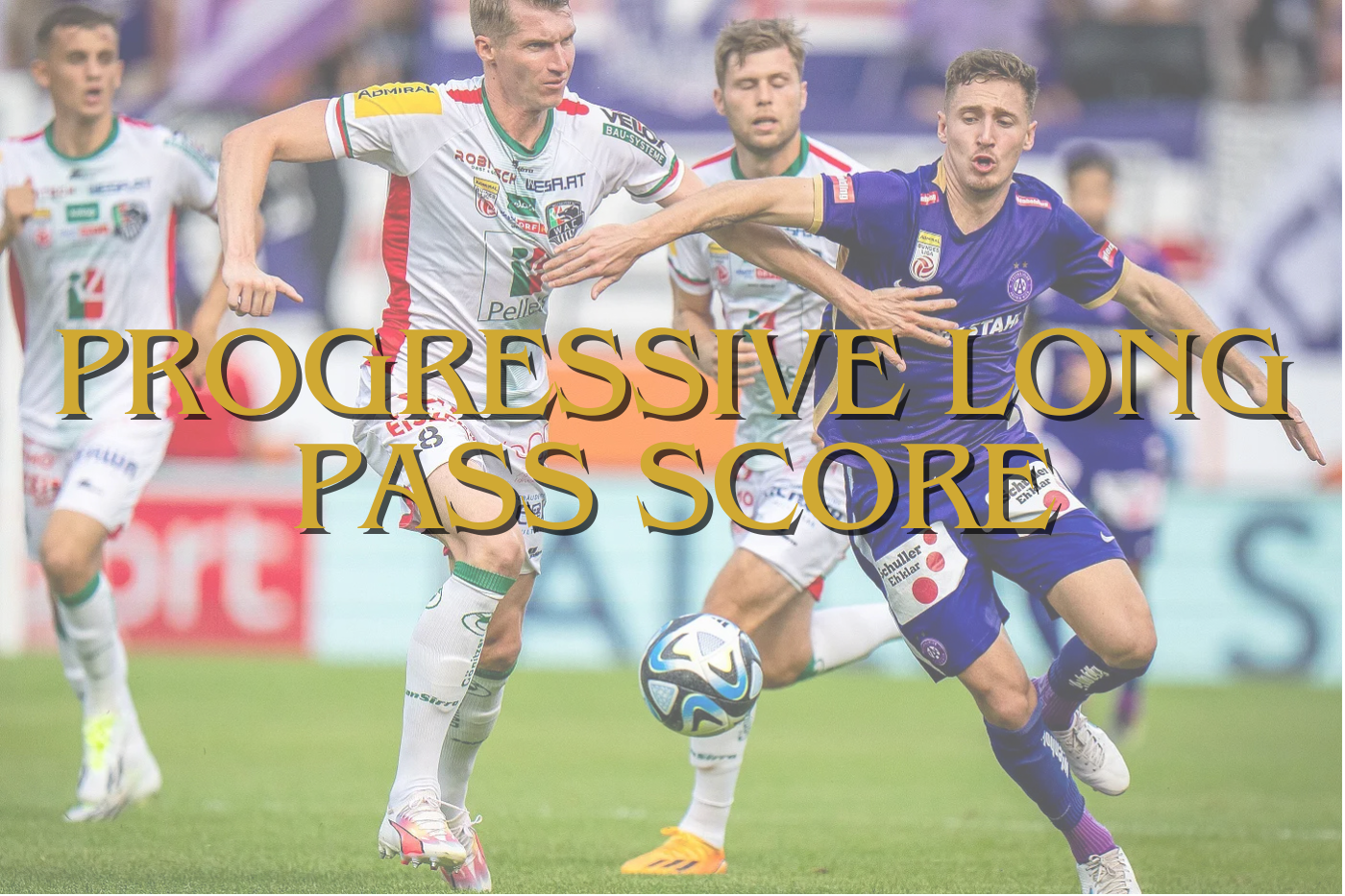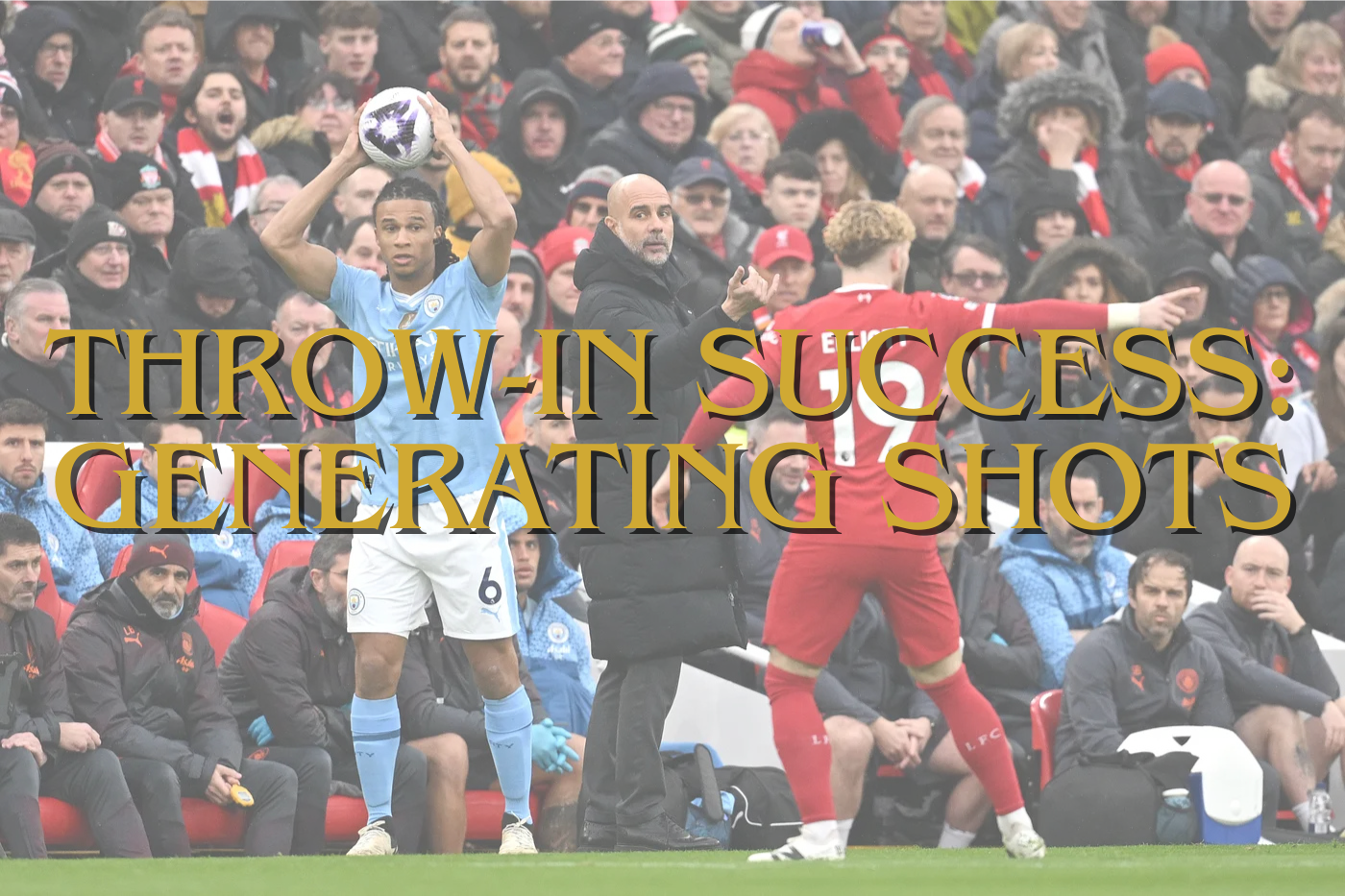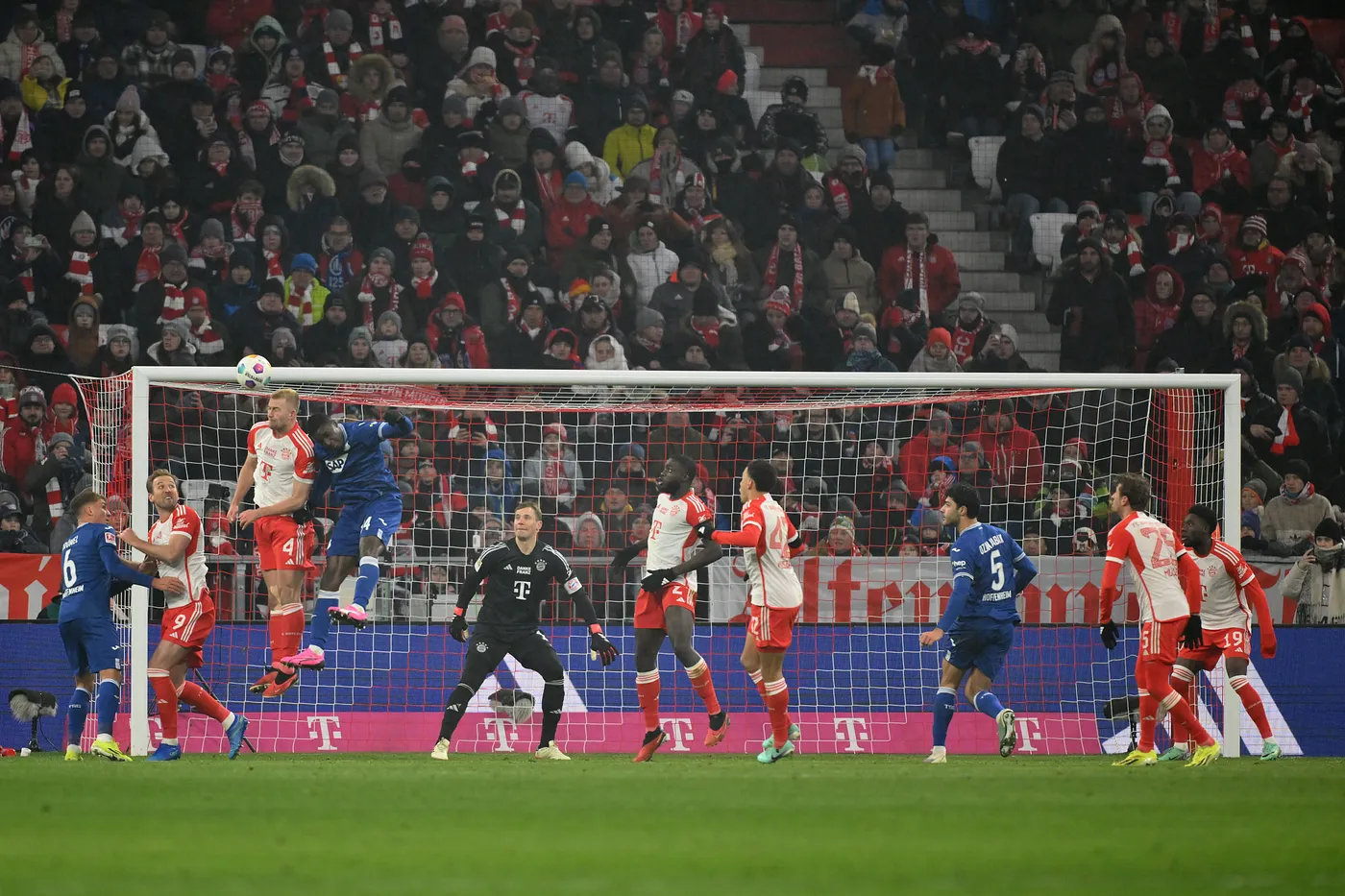Earlier this week I wrote about OH Leuven’s attacking corners. I didn’t only look at their routines but also had a look at their deliveries, the expected goals generated per corner, and the average xG generated by corner type. I’m going to do this as well, but this time concentrating on the Women’s Super League in England.
In this analysis I will look closely to the top-4 in England: Chelsea, Manchester City, Arsenal, and Manchester United. I will analyse their expected goals from corners, how their deliveries are, their average xG per corner type, and some of their successful corner routines. This is part two and will look at Arsenal and Manchester United.
I’ve chosen to look at the top-4 because I wanted to get a better idea of what the corners are in the WSL and because these top-4 teams, also are the top-4 when it comes to scored goals from corners. To get a good view of the attacking corners in this particular league, these teams are definitely worth watching in my opinion. I’m going to look at their last 4/5 games of the WSL 2020-2021 season to assess the generated xG.
Arsenal
Expected goals per corner
| Game | Side | Foot | Swing | Zonal structure | Length | Zone | xG | Goal | Minute |
| Everton | Right | Left | In | Two player | Long | Far post | 0 | No | 4 |
| Everton | Right | Right | Out | Two player | Long | Front post | 0,01 | No | 14 |
| Everton | Right | Left | In | Two player | Long | Central | 0 | No | 30 |
| Everton | Left | Left | Out | Two player | Long | Front post | 0,05 | No | 67 |
| West Ham United | Left | Right | In | Five player | Short | Central | 0,27 | No | 3 |
| West Ham United | Left | Left | Out | Five player | Long | Central | 0,07 | No | 35 |
| West Ham United | Right | Right | Out | Four player | Long | Far post | 0 | No | 41 |
| West Ham United | Right | Right | Out | Four player | Short | Front post | 0 | No | 70 |
| West Ham United | Right | Left | In | Four player | Long | Central | 0 | No | 71 |
| West Ham United | Right | Left | In | Four player | Long | Central | 0,09 | No | 92 |
| Brighton and Hove Albion | Left | Left | Out | Two player | Long | Far post | 0,18 | No | 7 |
| Brighton and Hove Albion | Right | Left | In | Two player | Long | Central | 0 | No | 8 |
| Brighton and Hove Albion | Right | Left | In | Four player | Short | Central | 0,01 | No | 14 |
| Brighton and Hove Albion | Right | Left | In | Four player | Long | Far post | 0 | No | 23 |
| Brighton and Hove Albion | Left | Left | Out | Four player | Long | Central | 0 | No | 23 |
| Brighton and Hove Albion | Right | Right | Out | Four player | Long | Far post | 0 | No | 25 |
| Brighton and Hove Albion | Left | Right | In | Four player | Short | Front post | 0 | No | 26 |
| Brighton and Hove Albion | Right | Left | In | Four player | Long | Central | 0 | No | 41 |
| Brighton and Hove Albion | Right | Left | In | Four player | Long | Central | 0 | No | 42 |
| Brighton and Hove Albion | Left | Left | Out | Four player | Long | Central | 0,01 | No | 44 |
| Brighton and Hove Albion | Left | Left | Out | Four player | Long | Central | 0,43 | No | 45 |
| Brighton and Hove Albion | Left | Left | Out | Four player | Long | Central | 0 | No | 57 |
| Brighton and Hove Albion | Left | Left | Out | Four player | Long | Far post | 0,08 | No | 94 |
| Bristol City | Right | Right | Out | Six player | Long | Central | 0 | No | 14 |
| Bristol City | Right | Right | Out | Six player | Long | Front post | 0 | No | 31 |
| Bristol City | Right | Right | Out | Five player | Short | Front post | 0 | No | 31 |
| Bristol City | Left | Right | In | Five player | Long | Central | 0,16 | No | 37 |
| Bristol City | Left | Right | In | Five player | Long | Front post | 0 | No | 39 |
| Bristol City | Right | Left | In | Five player | Short | Central | 0 | No | 42 |
| Bristol City | Left | Right | In | Five player | Long | Far post | 0 | No | 47 |
| Bristol City | Left | Left | Out | Five player | Long | Central | 0 | No | 75 |
| Bristol City | Right | Left | In | Five player | Long | Central | 0 | No | 82 |
| Bristol City | Left | Left | Out | Five player | Long | Front post | 0,05 | No | 86 |
| Bristol City | Left | Right | In | Five player | Long | Central | 0 | No | 88 |
In the table above you see every corner taken by Arsenal in their games against Everton, West Ham United, Brighton and Hove Albion, and Bristol City. What is interesting is that there are 34 corners taken by the Arsenal team, but 6 of those corners have been short. In total Arsenal have generated 1,41 expected goals from those 34 corners. That is an average of 0,415 xG per game via corners.
In the game against Everton, Arsenal have generated 0,06 xG. In their game against West Ham United, Arsenal have generated 0,43 xG. In their game against Brighton, Arsenal have generated 0,63 xG. In their game against Bristol City, Arsenal have generated 0,29 xG.
| Corner type | Total xG | Average xG |
| Left | 1,3 | 0,038235294 |
| Right | 0,11 | 0,036666667 |
| Swing in | 0,53 | 0,015588235 |
| Swing out | 0,88 | 0,025882353 |
| Short | 0,28 | 0,008235294 |
| Long | 1,13 | 0,033235294 |
| Front post | 0,11 | 0,003235294 |
| Central | 1,04 | 0,030588235 |
| Far post | 0,26 | 0,007058824 |
| Two player zonal | 0,24 | 0,007058824 |
| Four player zonal | 0,62 | 0,018235294 |
| Five player zonal | 0,55 | 0,016176471 |
| Six player zonal | 0 | 0 |
In the table above I’ve divided the corners into certain categories to assess how many xG has been generated per corner type. If we look at which side is most successful in generating that xG, then this is the left side. When we look whether short or long corners generate the most xG, then it is the long corner option.
When we have a look at which zone – the ball is being delivered into – generates the most xG in these games, then we can conclude that the central zone generates the most xG. Finally, if we look at the successful generating xG against certain zonal structures, we can conclude that Arsenal generates the most xG against four player zonal structures in the six-yard box.
Successful routines
In the video above we see attacking corner routine #1 from Arsenal. The corner comes from the left from a left-footed player, meaning the ball will swing out away from the six-yard box, rather than swing in. The position of the runners is deeper because the ball will come between six-yard box and penalty spot.
Arsenal lines up with one player in the six-yard box and with three player outside the six-yard box who will make runs forward. Two players are standing outside the penalty area in case of a cleared ball and/or as the first line of defence. They will make runs into the panty area as well. Deep outside the penalty are we have another Arsenal player
As soon as the ball is kicked, we see the three runners making runs, with two of them going to the front post, as well as the player in the six-yard box. They manage to lose their direct marker and this example it is Miedema who scores an excellent goal.
In the video above we see attacking corner routine #2 from Arsenal. The corner comes from the left from a left-footed player, meaning the ball will swing out away from the six-yard box, rather than swing in. The position of the runners is deeper because the ball will come between six-yard box and penalty spot.
Arsenal lines up with one player in the six-yard box and with five player outside the six-yard box who will make runs forward. Two players are standing outside the penalty area in case of a cleared ball and/or as the first line of defence. They will make runs into the panty area as well.
As soon as the ball is kicked, we see the five runners making runs. As the ball is played deep to the far post, we see that the players as a unit occupy the central zones and the far post zones. This means that Wubben-Moy can profit at the back post, because of the numbers in the six-yard box.
In the video above we see attacking corner routine #3 from Arsenal. The corner comes from the right from a left-footed player, meaning the ball will swing in towards the six-yard box, rather than swing out. The position of the runners is closer to the goal as the ball will be delivered close to the six-yard box.
There are three players outside the penalty area with two players close to the edge in the central zones, and one player on the right. There is one player in the six-yard box, while we have two units of two at the far post zones. These two units will attack the ball when it’s played close to the far post.
As soon as the ball is played, we can see that the ball is played to the far post zones and that the four players in those two units move to the far post. In the end, it’s Beattie from the unit close to the far post who heads the ball in goal.
Manchester United
Expected goals per corner
| Game | Side | Foot | Swing | Zonal structure | Length | Zone | xG | Goal | Minute |
| Bristol City | Left | Right | In | Four player | Long | Front post | 0,39 | No | 39 |
| Bristol City | Right | Right | Out | Five player | Long | Central | 0 | No | 43 |
| Bristol City | Right | Right | Out | Five player | Long | Far post | 0 | No | 67 |
| Bristol City | Right | Right | Out | Five player | Long | Central | 0 | No | 88 |
| Tottenham Hotspur | Left | Right | In | Four player | Long | Far post | 0,14 | No | 18 |
| Tottenham Hotspur | Left | Right | In | Three player | Long | Far post | 0 | No | 23 |
| Tottenham Hotspur | Left | Right | In | Three player | Long | Central | 0,01 | No | 72 |
| Tottenham Hotspur | Left | Right | In | Three player | Long | Central | 0 | No | 87 |
| Brighton and Hove Albion | Right | Right | Out | Five player | Long | Central | 0,03 | No | 26 |
| Brighton and Hove Albion | Right | Right | Out | Five player | Long | Central | 0,18 | No | 32 |
| Brighton and Hove Albion | Right | Right | Out | Five player | Long | Front post | 0 | No | 41 |
| Brighton and Hove Albion | Right | Right | Out | Five player | Long | Far post | 0,08 | No | 50 |
| Brighton and Hove Albion | Left | Right | In | Five player | Long | Front post | 0,02 | No | 53 |
| Brighton and Hove Albion | Right | Right | Out | Five player | Long | Central | 0,06 | No | 74 |
| Brighton and Hove Albion | Right | Right | Out | Five player | Long | Central | 0 | No | 82 |
| Brighton and Hove Albion | Left | Right | In | Five player | Long | Central | 0,15 | No | 90 |
| West Ham United | Left | Right | In | Five player | Long | Central | 0,01 | No | 13 |
| West Ham United | Right | Right | Out | Five player | Long | Far post | 0,35 | No | 36 |
| West Ham United | Left | Right | In | Five player | Long | Front post | 0,01 | No | 39 |
| West Ham United | Left | Right | In | Five player | Long | Front post | 0,03 | No | 40 |
| West Ham United | Left | Right | In | Five player | Long | Central | 0,41 | Yes | 49 |
| West Ham United | Right | Right | Out | Five player | Long | Central | 0 | No | 58 |
| West Ham United | Right | Right | Out | Five player | Long | Far post | 0 | No | 68 |
| West Ham United | Left | Right | In | Five player | Long | Front post | 0 | No | 86 |
| West Ham United | Left | Right | In | Five player | Long | Far post | 0,07 | No | 89 |
In the table above you see every corner taken by Manchester United in their games against Bristol City, Tottenham Hotspur, Brighton and Hove Albion, and West Ham United. What is interesting is that there are 25 corners taken by the Manchester United team, none have been short. In total Manchester United have generated 2,57 expected goals from those 34 corners. That is an average of 0,415 xG per game via corners.
In the game against Bristol City, Manchester United have generated 0,39 xG. In their game against Tottenham Hotspur, Manchester United have generated 0,15 xG. In their game against Brighton, Manchester United have generated 0,52 xG. In their game against West Ham United, Manchester United have generated 0,88 xG.
| Corner type | Total xG | Average xG |
| Left | 1,24 | 0,0496 |
| Right | 1,33 | 0,0532 |
| Swing in | 1,24 | 0,0496 |
| Swing out | 1,33 | 0,0532 |
| Short | 0 | 0 |
| Long | 2,57 | 0,1028 |
| Front post | 0,45 | 0,018 |
| Central | 0,85 | 0,034 |
| Far post | 1,27 | 0,0508 |
| Three player zonal | 0,01 | 0,0004 |
| Four player zonal | 0,53 | 0,0212 |
| Five player zonal | 2,03 | 0,0812 |
In the table above I’ve divided the corners into certain categories to assess how many xG has been generated per corner type. If we look at which side is most successful in generating that xG, then this is the right side. When we look at whether short or long corners generate the most xG, then it is the long corner option – because there have not been short passes.
When we have a look at which zone – the ball is being delivered into – generates the most xG in these games, then we can conclude that the far post zone generates the most xG. Finally, if we look at the successful generating xG against certain zonal structures, we can conclude that Manchester United generates the most xG against five player zonal structures in the six-yard box.
Successful routines
In the video above we see attacking corner routine #1 from Manchester United. The corner comes from the right from a right-footed player, meaning the ball will swing out away from the six-yard box, rather than swing in. The positioning of the runners will be different as their runs will be more conservative as the ball is played between the six-yard box and the penalty spot.
There is one player to the right who is available for the short pass option, but she makes her way into the penalty area. In the six-yard box, we see a player against the two player zonal structure employed by Bristol City in this particular game. There are four runners who will make runs towards the six-yard box to attack the corner.
As soon as the ball is played, we can see that the ball is played to the far post zones and that the four players each move into a different position to enhance the chance of getting at the end of the cross. Ultimately it’s Turner at the far post who scores the goal.
In the video above we see attacking corner routine #2 from Manchester United. The corner comes from the right from a left-footed player, meaning the ball will swing in towards the six-yard box, rather than swing out. The positioning of the runners will be different as their runs will be more progressive as the ball is played in the six-yard box.
In this game against Manchester City we see two players outside the penalty area. They are tasked with dealing with the cleared balls and attacking them, but also with the first line of rest-defence in case of a counter-attack. In the penalty area, we see four players on the edge of the six-yard box, one making a run from deeper in the penalty area, and one player in the six-yard box.
As soon as the ball is played, we can see that the ball is played between the front post zones and the central zones, with six players in the six-yard box. The players move towards the front post and perhaps it doesn’t seem flawless, but in the end, Manchester United score a very important goal against Manchester City.
In the video above we see attacking corner routine #3 from Manchester United. The corner comes from the right from a left-footed player, meaning the ball will swing in towards the six-yard box, rather than swing out. The positioning of the runners will be different as their runs will be more progressive as the ball is played in the six-yard box.
In this game against Tottenham Hotspur, we see two players in the six-yard box. On the right we see a player who is available for the short pass option, and on the edge of the penalty area, we see two players who are tasked with attacking the cleared balls – and guarding the first defensive line of rest-defence. There is one player on the edge of the six-yard box and one player who is situated on the deep far post zone.
As soon as the ball is played, we can see that the ball is played between the far post zones and the central zones, with three players in the six-yard box. Two players move to the central zones, luring defenders away from the far post. By creating space at the far post, it becomes easier for the player over there to attempt a shot at goal. The header is well executed and gives Manchester United another goal.







